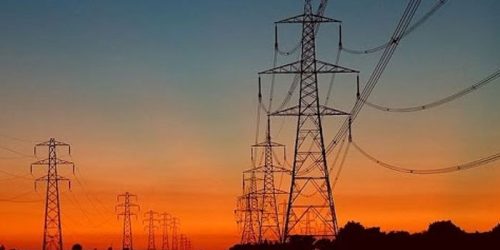ISLAMABAD: After the MoUs signed with the independent power producers (IPPs) installed under 1994, 2002 and 2006 power policies, the tariff of private power houses will be sliced but the sale tariff for end consumers will not tumble, as the Power Division wants to use the gains to be achieved from reduction in the IPPs tariff to cope up with the circular debt that has jacked up to over Rs2.2 trillion.
Talking to The News on the power sector’s woes and forward looking strategy to rid the sector of financial morass, one of the top men of the Power Division said the government was estimated to have gains of Rs40 billion per annum for three years in the wake of reduction in power generation houses’ electricity tariff, which the top mandarins of the Power Division want to utilize to curb the circular debt.
“After three years period, the annual gains will increase,” he said. The final decision would be made by the prime minister whether the gains should be used to reduce the sale tariff for end consumers or utilized for tackling the circular debt. However, he expressed fear that if the gains were not consumed for circular debt, rather sale power tariff is reduced, then $452-500 million will add to the circular debt on an annual basis.
Coming to the power plants, including the projects established under the CPEC umbrella as per 2015 power policy, he said the governments of both Pakistan and China were in talks as of now. China had earlier asked the authorities in Pakistan to first negotiate with the local IPPs and the relief the government will get, Beijing will also review the same.
When asked about the IMF’s reaction if the government avoids increasing the tariff, one of the top men of Power Division said the IMF was concerned more about the circular debt that had virtually made the power sector unsustainable and that is why the Power Division wanted to utilize the gains for curtailing the payables of the power sector.
When drawn his attention towards the fact that MoUs are yet to be converted into agreements and to this effect the IPPs want payment of their dues first before signing the agreements, he said, “Yes, it is right and to this effect the government is working on a payment schedule. The IPPs dues stand over Rs300 billion and the remaining Rs300 billion were to be paid by the public sector powerhouses.
The top functionary of the Power Division further said that the profit of nuclear power plants installed under the PPA (power purchase agreement) with 15% rate of return plus dollar indexation would be reduced to 14.5 percent and the return will be paid in rupee with US dollar value at Rs148.
The profit of public sector power plants based on oil, gas, coal including hydropower plants would be reduced to 10 percent from 15-16 percent. He disclosed that many inefficient public sector power generation houses will be closed down forever. However, real competitive power plants would be used for electricity generation.
“We have four units in Jamshoro and two will be closed down. In Guddu, there are four units, which will be closed down. However, the 747MW project having 47 percent efficiency will continue to operate.
There is a public sector power unit of 35MW in Quetta, which will also be closed down. Similarly, there are 6 power generation units in Muzaffargarh out of which 2 units will be shut down for ever and three units in Lakhra.” He said savings estimates were yet to be finalized. However, the Power Division’s estimates are that the savings would be around Rs40 billion per year as a result of reduction in tariff of power houses. He said the Power Division’s estimates also needed due diligence.
The Central Power Purchase Agency procures electricity from Gencos, The IPPs are based on gas, oil, and coal. In addition, it also purchases electricity from hydropower plants, nuclear power plants, wind, and solar projects.
To a question, he said the period of power purchase agreements (PPAs) of IPPs installed under 1994 power policy will be over in next 4-5 years and similarly the agreements of IPPs installed under 2002 will expire after 10-12 years.
He agreed saying that the power plants under 2002 and 2015 power policies will continue to haunt end consumers for a longer period. He, however, argued that the government had managed to introduce with the consent of IPPs material changes in the PPAs that will yield reasonable dividends.
He mentioned that the main clause of the agreement of 15% profit plus dollar indexation offered to IPPs under 2002 power policy had been changed to 17 percent rate of return with Pak Rupee indexation. And the IPPs will be paid that profit as per value of dollar at Rs148.
The value of US dollar currently hovers at Rs168. However, the rate of return of foreign-funded IPPs has been reduced from 15 percent to 12 percent with US dollar indexation.
The agreements based on take or pay mode will be converted into the ones based on take and pay only when the competitive market system having multi-buyers of electricity being generated by IPPs is established and operational. However, for oil-fired powerhouses, any saving in fuel will be shared with the government also.







